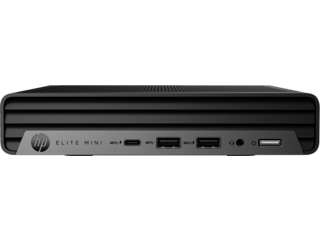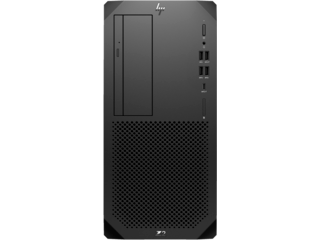For American consumers and businesses alike, choosing between inkjet and laser printing technology can significantly impact both productivity and budget. While ink remains the go-to choice for most home printers, laser printers with toner cartridges have become increasingly popular across U.S. households and small businesses. Let’s explore the key differences between these technologies to help you make an informed decision.
Given that each technology has its own unique advantages, your choice will largely depend on how you plan to use your printer. Whether you’re working from home, running a small business, or managing a larger office, understanding these differences is crucial for optimizing your printing setup and managing costs effectively.
Understanding Both Printing Technologies
Before diving into specific advantages, let’s examine how these two technologies work and their practical applications in different settings, from home offices to large enterprises. We’ll explore their impact on your budget, print speed, accuracy, and specialized needs like photo and color printing.
What is an Inkjet Printer?
Inkjet printers, which you’ll find in many American homes, use
ink cartridges to produce prints. These printers work by spraying tiny droplets of liquid ink onto paper through microscopic nozzles, creating images and text with remarkable precision.
How Inkjet Printing Works
The printing process uses thermal inkjet technology, where tiny heating elements vaporize small amounts of ink, creating bubbles that force droplets onto the paper. This process happens thousands of times per second, resulting in crisp, clear prints.
Most inkjet printers use either two or four cartridges:
- One black cartridge
- Either three separate color cartridges (cyan, magenta, yellow) or
- A single tri-color cartridge combining all three colors
What is a Toner Printer?
Laser printers use
toner, a fine powder made from granulated plastics, rather than liquid ink. These printers work by using a laser to create an electrostatic charge on a drum, which then attracts toner particles to create the image or text.
The Laser Printing Process
The printer’s laser draws the page content on a positively charged drum using negative charges. Toner particles are attracted to these negative charges, then transferred to paper and fused using heat. This process creates extremely precise, smudge-resistant prints.
Advantages of Inkjet Printing
1. Cost-Effective for Home Use
For many U.S. households, inkjet printers offer an attractive initial investment. Models like the
HP Smart Tank 5101 All-in-One Printer provide excellent value with features like print, scan, and copy capabilities, plus up to 2 years of ink included.
6 Months Special Financing
12 Months Special Financing
24 Months Special Financing
On purchases of $200 or more with the HP Credit Account*
Buy now, pay later†
Perfect for accessories & budget tech
Fast approval process
Basic Student Tech
Purchases of $200 or more
On purchases of $750 or more with the HP Credit Account*
Buy now, pay later†
Great for laptops & mainstream computers
Fast approval process
College Essentials
Purchases of $750 or more
On purchases of $2,500 or more with the HP Credit Account*
Buy now, pay later†
Ideal for premium & gaming systems
Fast approval process
Power Users & Gamers
Purchases of $1,500 or more
2. Superior Photo and Color Quality
Inkjet printers excel at producing vibrant photos and color documents. Their ability to blend colors smoothly makes them ideal for:
- Family photo printing
- School projects
- Marketing materials
- Creative projects
3. Versatility for Different Needs
Inkjet printers handle a wide variety of paper types and sizes, making them perfect for diverse household printing needs. Plus, services like
HP Instant Ink help American families save money and time by automatically delivering replacement cartridges when needed.
Advantages of Toner Printing
1. Cost-Effective for High-Volume Printing
While laser printers like the
HP LaserJet Pro 3001dw Wireless Printer may have a higher upfront cost, they often prove more economical for users who print frequently. This makes them particularly attractive for:
- Small businesses
- Home offices
- Professional environments
- High-volume users
2. Superior Text Quality and Speed
Laser printers excel at producing sharp, professional-quality text documents. The
HP Color LaserJet Enterprise 6700dn Printer offers impressive speeds up to 55 pages per minute, perfect for business environments where time is money.
3. Durability and Precision
Toner-based prints are:
- More resistant to water damage
- Less likely to smudge
- More durable over time
- Ideal for professional documents
Making Your Choice
Consider these factors when deciding between ink and toner:
For Home Users
If you primarily print:
- Family photos
- School assignments
- Occasional documents
- Creative projects
For Business Users
If you regularly print:
- Large documents
- Professional reports
- Marketing materials
- High-volume jobs
Hybrid Solutions
Many American offices and home businesses benefit from having both types of printers. Using a laser printer for documents and an inkjet for color-intensive materials can provide the best of both worlds while optimizing costs and quality for different printing needs.
Conclusion
Both inkjet and laser printing technologies have their place in today’s digital world. Your choice should align with your specific needs, whether you’re a family looking for versatility in home printing or a business requiring high-volume document production. Consider your typical printing volume, the types of documents you print most often, and your budget for both initial purchase and ongoing supplies.
Remember, there’s no one-size-fits-all solution. The key is to match the technology to your specific requirements, ensuring you get the most value and efficiency from your printing investment.
About the Author
Dwight Pavlovic is a contributing writer for HP® Tech Takes. Dwight is a music and technology writer based out of West Virginia.





















